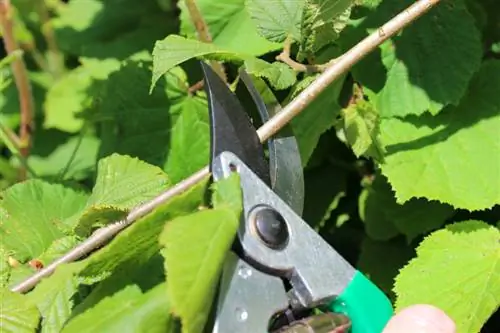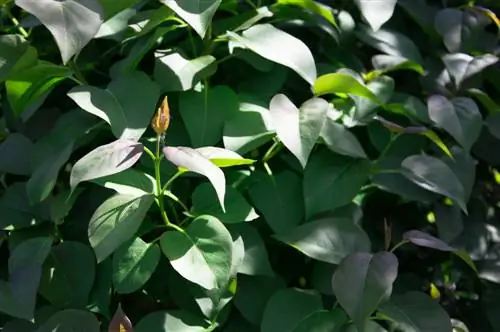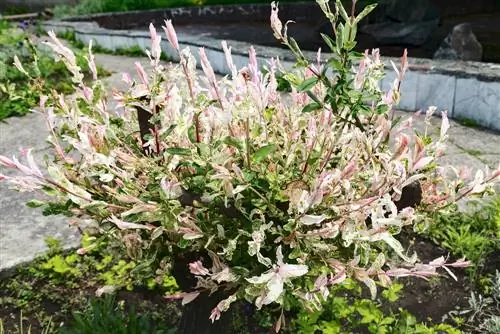- Author admin [email protected].
- Public 2023-12-16 16:46.
- Last modified 2025-01-23 11:20.
The hazelnut was planted in the wrong place? Did it crowd out other plants or even turn out larger than expected? There are many reasons to transplant a hazelnut. But how do you do it right?

How can I transplant a hazelnut correctly?
To successfully transplant a hazelnut, choose frost-free days between the end of October and January, dig up the root system to a depth of at least 50 cm, loosen the soil in the new location, enrich it with compost and plant the hazelnut back on.
Difficulties that often arise
Many gardeners see the hazelnut as a pest in the home garden because it occupies far too large a territory with its mass of runners. It is their runners that make transplanting difficult or, in some cases, a pointless activity. The old location is often taken back with the help of root runners
Transplanting hazelnuts can still be problematic due to the deep root system. The entire root system of an old hazelnut can be difficult to dig up again. Therefore, the hazelnut quickly loses parts of its roots when transplanted. But don't worry: the hazelnut is usually extremely robust and is not easily destroyed.
When is the best time to transplant?
The best time to transplant hazelnuts - regardless of whether they are a hazelnut bush or a hazelnut tree - is on frost-free days between the end of October and January. The plant should be in its dormant phase (leafless state). Transplanting should no longer be done from January onwards, as the hazelnut begins its flowering period in February and transplanting would cost it additional energy.
In addition, it is better to transplant the hazelnut when it is young rather than when it is old. The older the plant, the more complex the already major effort becomes. The reason: Over the years, the roots protrude more and more in width and depth. In the worst case scenario, only an excavator can help
And now put it into action
To keep the hazelnut alive, its roots should be dug at least 50 cm deep. Once at the new location, the following should be done:
- Loosen the soil well and improve it with compost
- Planting hazelnuts
- if young hazelnut specimen: attach support post
- after planting: water regularly and cut back vigorously
Tips & Tricks
In general, it is not advisable to transplant hazelnuts. Once a location has been taken over, it is difficult to evict from there without leaving a trace.






